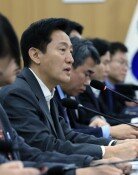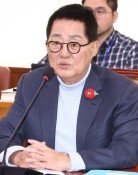Is Korea prepared for US exchange rate policy?
Is Korea prepared for US exchange rate policy?
Posted July. 22, 2024 07:43,
Updated July. 22, 2024 07:43
In an article published last month, Japan's Nihon Keizai Shimbun suggested an intriguing perspective on three ways to deal with exchange rates in the global financial market. They are 1) the G7 approach that advocates the free market principle of leaving exchange rates to the market; 2) the developing country approach that countries actively intervene in exchange rate changes considering the impact on the economy; 3) the Japanese approach in which the government claims that exchange rates are not considered but it is the only subject on its mind. It was a criticism of Japan's economic fundamental’s exposure to exchange rates despite being one of the world's five largest domestic markets (the U.S., Europe, China, India, and Japan).
Exchange rates have become the focus of Japan’s economic policy because of the ‘Plaza Accord’ that Japan signed 39 years ago. In 1985, the United States, Japan, Germany, France, and the United Kingdom signed the Plaza Accord to artificially lower the dollar's value against each country's currency. Since the agreement, Japan has faced a ‘lost 30 years’ as it has failed to properly respond to the yen-dollar exchange rate decline.
The yen-dollar exchange rate, 235 yen per dollar in 1985, plummeted to the 120 yen range in a year. Japan's export competitiveness dropped along with the exchange rate. Back then, the Japanese authorities chose to increase the domestic money supply. The long-term interest rate, around 7% per year in 1985, was lowered to around 4% two years later, and real estate loan regulations were relaxed. The economic bubble snowballed as artificially-valued currencies were released into the market. Mitsubishi's purchase of Rockefeller Center in Manhattan in 1989 happened at the peak of the bubble economy. After that, strong lending regulations were implemented. Stock and real estate prices plummeted, and banks and securities companies went bankrupt.
Japanese Prime Minister Abe Shinzo implemented quantitative easing to revive the Japanese economy in the 2010s, which was basically all about exchange rates. With the yen printed out faster than ever, the yen-dollar exchange rate, which was in the 80 yen range in 2012, rose to the 120 yen range in 2015. With a weakened yen, the yen exchange rate fluctuated in the 160 yen range. With the streets of Tokyo's Ginza and Osaka's Dotonbori filled with Koreans shopping by taking advantage of the weak yen as well as the strong performance of export-driven companies such as Toyota, some of the positive effects anticipated by the Japanese government are materializing. The Japanese people are not happy with unstable inflation, which has remained unchanged for over 30 years, but Japanese authorities neither have any will nor capability to boost the yen.
“We have a big currency problem. They always want to be weak.” Japan views this remark by U.S. Republican presidential candidate Donald Trump with anxiety. Japan has barely begun to see foreign money influx and better export performance as a result of quantitative easing, which has been in effect for over 10 years, but the forced “arm twisting” by the U.S. could lead to drastic changes. The Japanese government is concerned that overturning the low yen policy implemented to appease people unhappy with unstable inflation may extinguish the flames of a reviving economy. At the same time, though, they do not dare to confront Trump. This is Japan’s concern, as its economic fate will be determined by an exchange rate that it cannot control.
The Plaza Accord worked in Korea’s favor, lowering oil prices, dollar values, and interest rates. Korea joined the ranks of advanced economies, helped by the U.S.-Japan semiconductor agreement, the opening of the Chinese market, and greater technological competitiveness.
If Trump‘s enforcement of a strong dollar policy becomes a ‘Second Plaza Agreement,’ will Korea be able to benefit as much as it did 39 years ago? Back then, Korea developed a strategy to survive in the gap between great powers, but its economy has grown too large to avoid external struggles. How should Korea respond if it is grouped with Japan and China as a threat to the American manufacturing industry? Japan and China may survive on domestic demand, which Korea cannot compete in scale. We have a storm approaching, but no preparations to come up with solutions.







